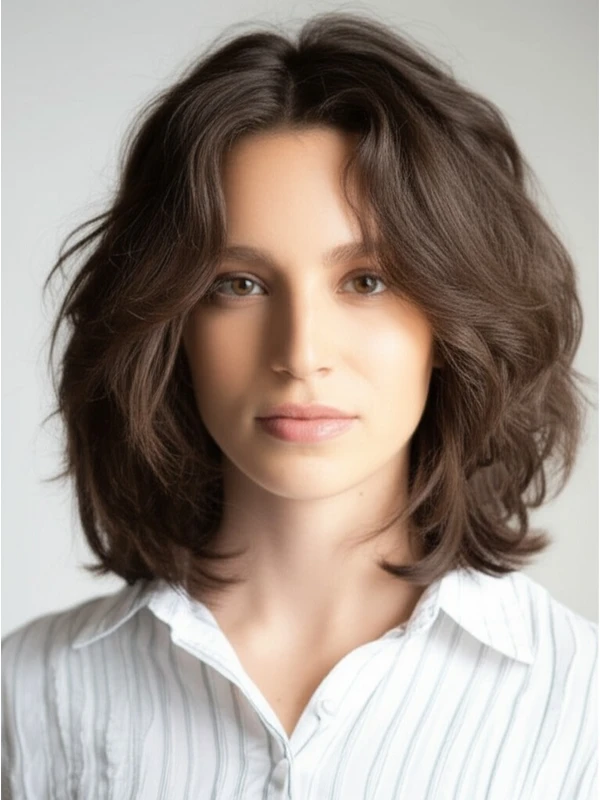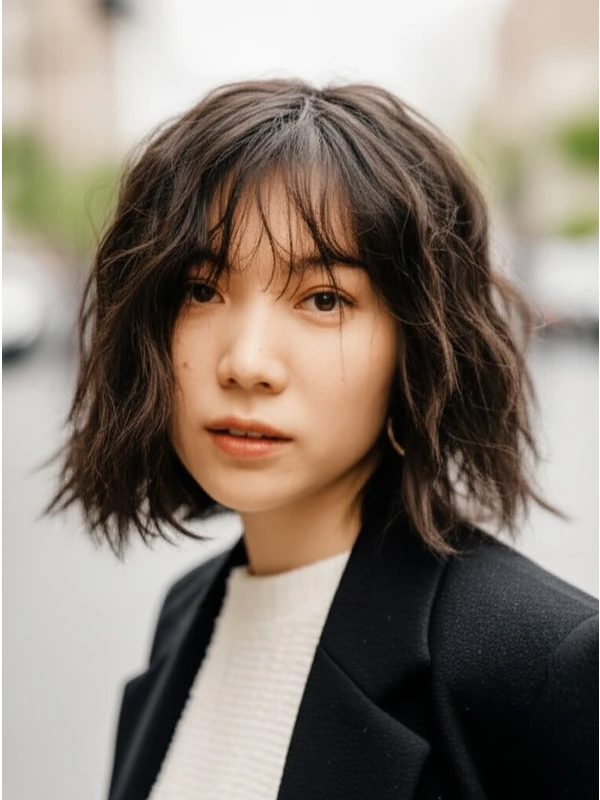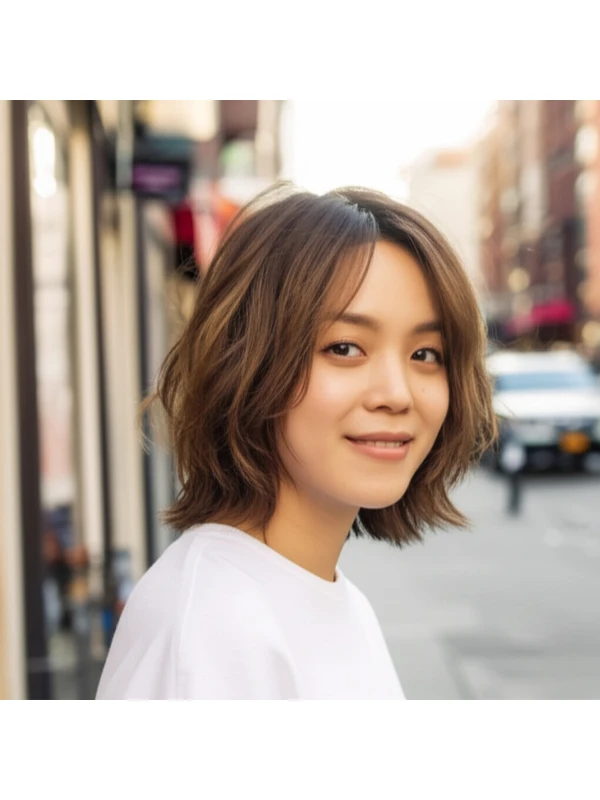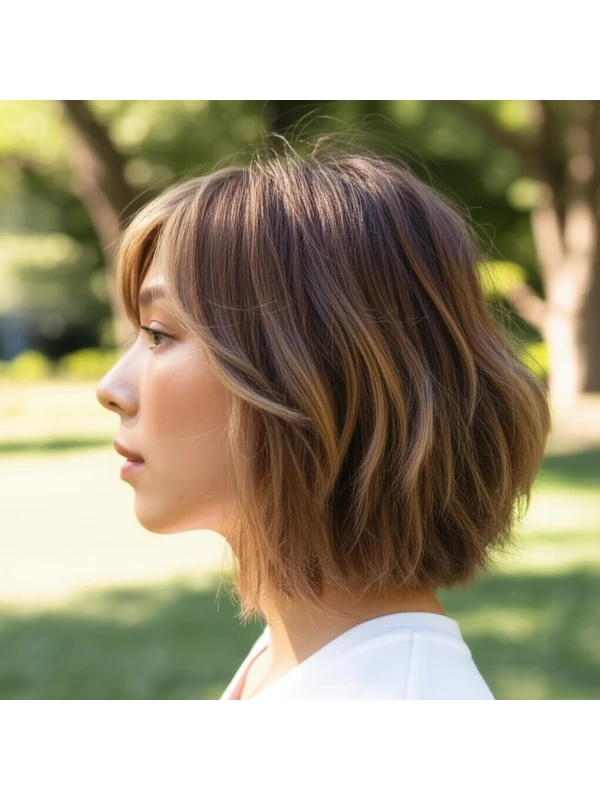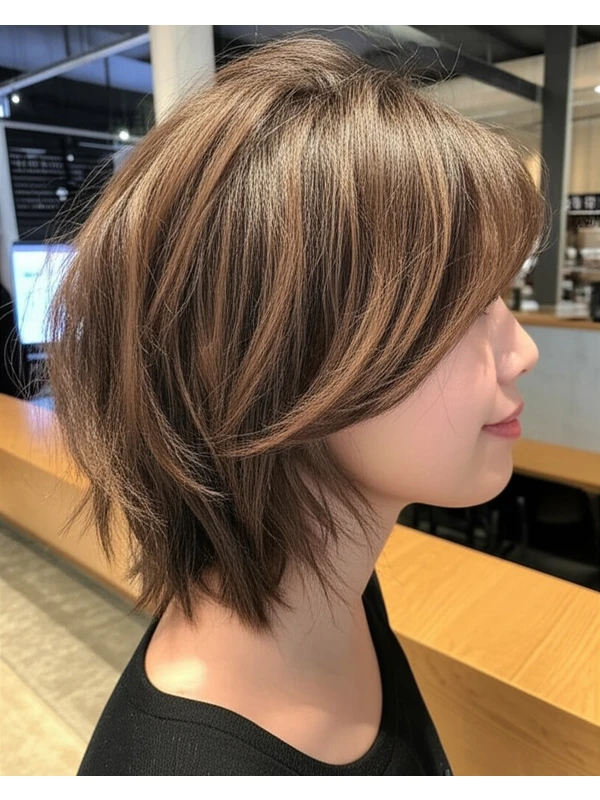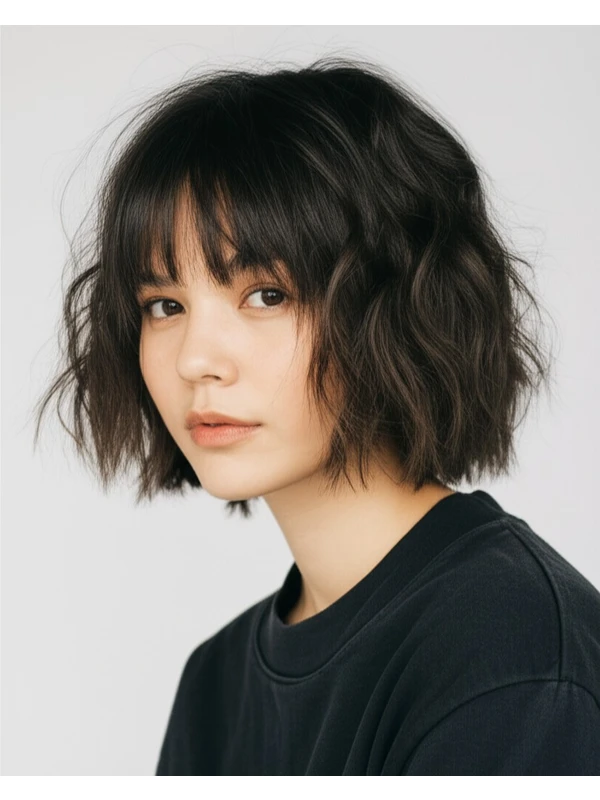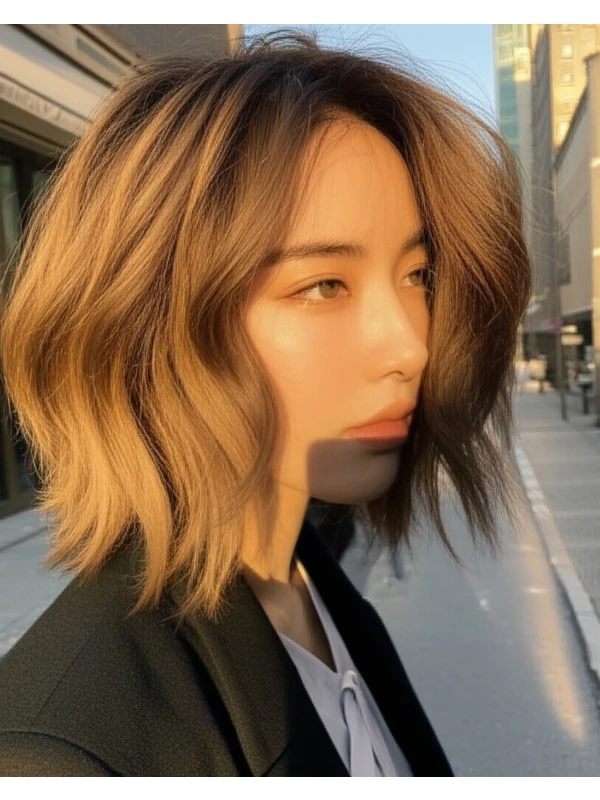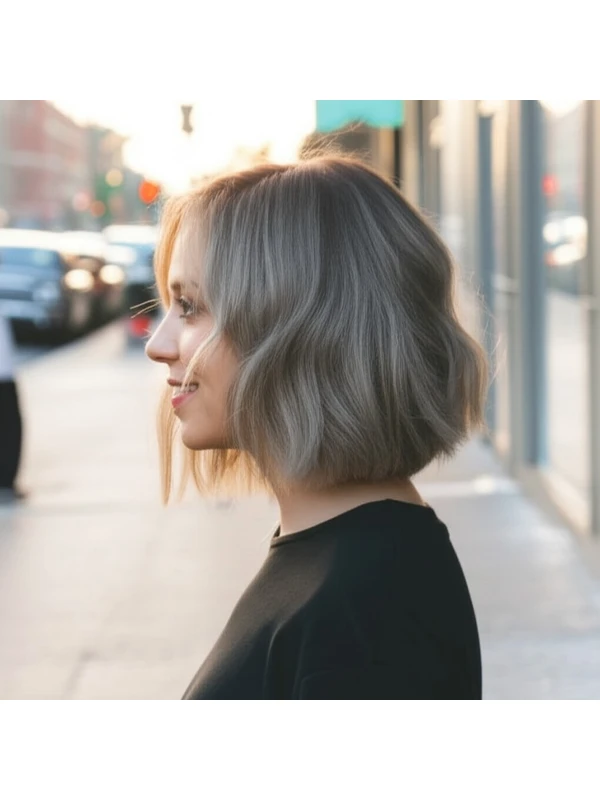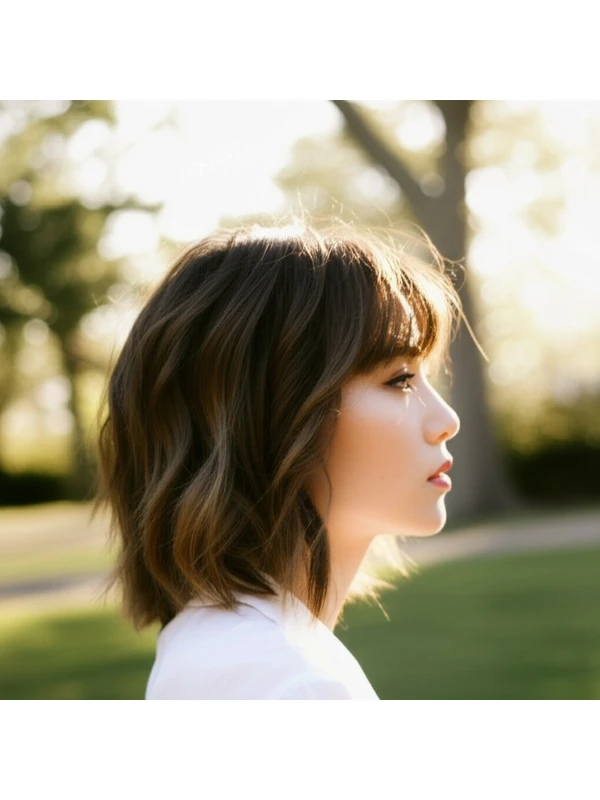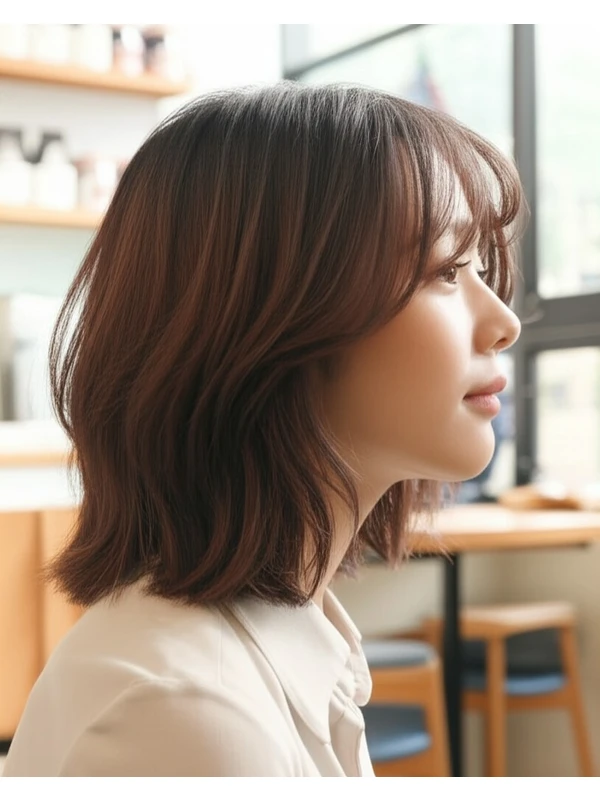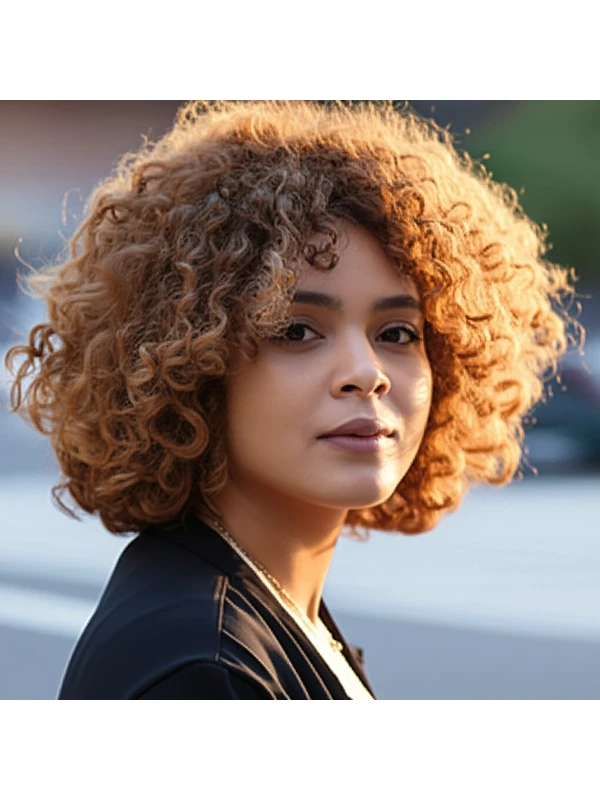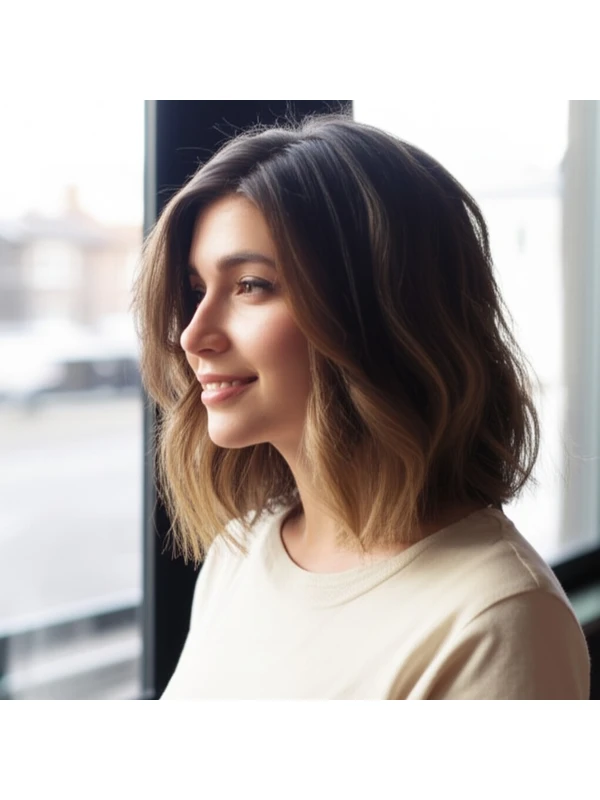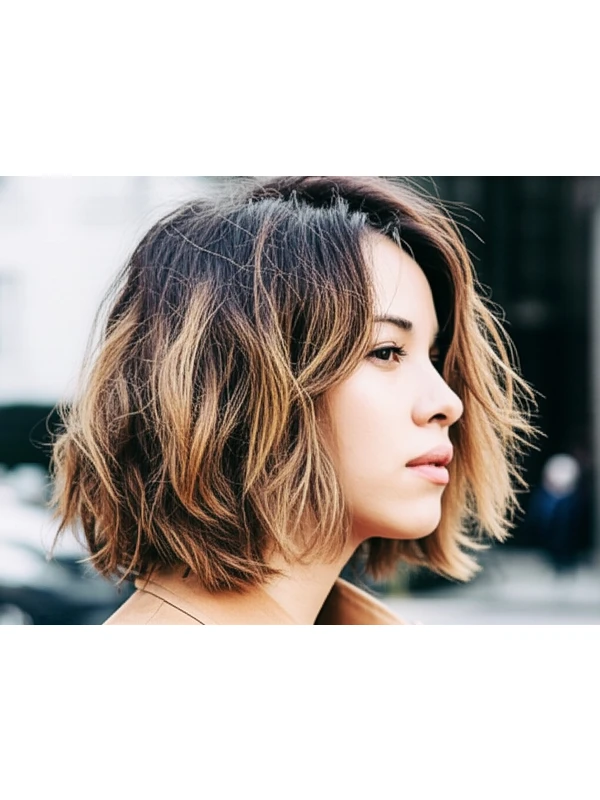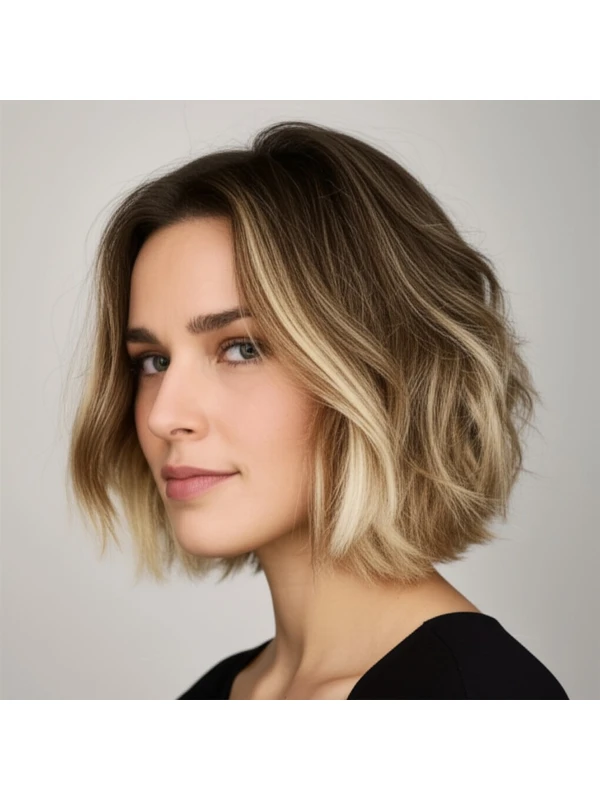#The Wolf Lob: A Guide to This Edgy & Effortless Hairstyle
The wolf lob – it’s a mouthful, but this hairstyle is surprisingly versatile and universally flattering! It's been gaining serious traction for its cool-girl vibe and ease of styling. Let’s break down everything you need to know about the wolf lob, from what it is to how to make it work perfectly for you.
#1) Background & Definition: What is a Wolf Lob?
The "wolf lob" is a hybrid hairstyle combining elements of a classic bob and a longer, layered style inspired by wolves (hence the name!). Think effortless texture, face-framing layers, and an overall slightly undone feel. It’s designed to look intentionally messy but still polished.
- Cut Geometry: The wolf lob typically features shorter layers around the crown that gradually lengthen towards the ends. The back is often a bit longer than a traditional bob, creating movement and visual interest.
- Key Features: Texture, face-framing layers, soft edges (not blunt!), volume at the crown, and an overall "lived-in" look.
- Typical Length Ranges: Generally falls between the chin and collarbone – around 8 to 14 inches long (20 - 35 cm). The exact length depends on your face shape and personal preference.
- Alternative Names: Layered lob, textured bob, wolf cut bob, shaggy lob.
#2) Face Shape Fit: Finding Your Perfect Wolf Lob Angle
The beauty of the wolf lob is its adaptability. However, certain adjustments can maximize its flattering effect for different face shapes.
- Oval: Lucky you! The wolf lob works beautifully with oval faces. Embrace the natural layers and volume – minimal tweaks are needed. A side-swept fringe adds a touch of softness.
- Round: Soften roundness by adding height at the crown and keeping the length below the chin (around 10-12 inches). Avoid too much fullness around the cheeks. A long, wispy fringe can help elongate the face.
- Square: The wolf lob's layers soften a square jawline. Focus on creating movement and avoiding harsh lines. A piecey, textured fringe or even no fringe at all works well to break up angularity.
- Heart: Balance a wider forehead with side-swept bangs or face-framing layers that start higher up near the temples. Keeping the length around collarbone level helps balance a narrower chin.
- Diamond: The wolf lob's volume can soften diamond shapes, particularly if it’s styled with soft waves. A fringe (either blunt or wispy) can help balance wider cheekbones.
- Oblong: Add width to an oblong face by opting for more layers and volume around the sides. Avoid styles that are too long and sleek as they can further elongate the face. A full, textured fringe is a great option!
#3) Body Proportions & Height Guidance: Tailoring the Silhouette
The wolf lob isn't just about your face; it’s about how it complements your entire body shape.
- Petite: A shorter wolf lob (chin-length) with minimal volume creates a lengthening effect. Too much length can overwhelm smaller frames.
- Average Height: You have the most flexibility! Experiment with different lengths and volumes to find what suits you best.
- Tall: Longer wolf lobs (collarbone-length or slightly longer) balance taller statures well. Increased volume at the crown adds visual interest.
- Narrow Shoulders: Layers that start lower on the head create the illusion of wider shoulders. A side part also helps add asymmetry and width.
- Broad Shoulders: Avoid excessive volume at the shoulder line, as this can accentuate broadness. Focus on layering towards the face to draw attention upwards.
- Short Neck: Keeping the lob longer (collarbone-length or slightly below) creates the illusion of a longer neck. Avoid overly short styles that emphasize a shorter neckline.
- Long Neck: A shorter wolf lob with more volume around the crown can help balance a long neck.
#4) Works Best With Hair Types & Densities: Matching Cut to Texture
The wolf lob’s versatility shines here, but understanding your hair type is key for successful styling.
- Straight Hair: This cut looks fantastic with straight hair! Embrace the natural texture and add some piecey-ness with a texturizing product.
- Wavy Hair: The layers in a wolf lob enhance natural waves, creating beautiful movement and definition. Be mindful of frizz – a smoothing serum can be your best friend.
- Curly/Coily Hair: A wolf lob can work for curls and coils! However, length is crucial. Shorter lengths (chin to mid-neck) generally perform better than longer styles which can become heavy and shapeless. Account for shrinkage – what looks like a 12-inch cut in the salon might shrink to 8-9 inches when dry.
- Fine Hair: Layers add volume, but too many can make fine hair look even thinner. Communicate this concern with your stylist. A root lifting product can boost volume at the crown.
- Medium Hair: The wolf lob is a perfect match for medium density hair – you have enough fullness to support the layers and texture.
- Thick Hair: Thinning out the hair during the cut (point cutting) is essential to prevent the wolf lob from looking bulky.
#5) Styling Variations: From Casual Cool to Evening Chic
The beauty of this style lies in its adaptability!
- Sleek vs. Textured: Sleek styling uses a smoothing serum and flat iron for a polished look. Textured styles embrace natural waves or create them with a curling wand/iron.
- Middle vs. Side Part: A middle part creates symmetry, while a side part adds softness and volume.
- Fringe Variations: Wispy bangs, curtain bangs, blunt fringe – all work well depending on your face shape and desired aesthetic.
- Occasion Styling:
- Casual: Air-dry with a texturizing spray for an effortless vibe.
- Office: Sleek styling with minimal texture.
- Evening: Add waves or curls, and finish with hairspray for hold.
#6) Maintenance: Keeping Your Wolf Lob Looking Fresh
- Trim Cadence: Every 6-8 weeks to maintain shape and prevent split ends.
- At-Home Routine: Gentle shampoo/conditioner, leave-in conditioner (especially important for curls!).
- Heat vs. Air Dry: Air drying is ideal for maintaining texture. If using heat, always use a heat protectant!
- Product Checklist:
- Shampoo & Conditioner: Suitable for your hair type.
- Leave-In Conditioner: For moisture and detangling (essential for curls/coils).
- Texturizing Spray or Sea Salt Spray: To enhance texture.
- Smoothing Serum: For frizz control (especially on wavy/curly hair).
- Hairspray: For hold.
- Estimated Daily Styling Time: 5-15 minutes, depending on desired style and hair type.
#7) Grow-Out Roadmap: Evolving Your Look
- Months 1-3: The shape is at its most defined. Regular trims are crucial to maintain the layers.
- Months 4-6: Layers start to blend together slightly. Consider adding a few face-framing pieces for a softer look, or asking your stylist to refine the overall shape. The length may feel "in between" – embrace it!
#8) Color Pairings: Enhancing Your Wolf Lob’s Dimension
- Cool Undertones: Ashy blondes, cool browns, and even icy grays complement cooler skin tones beautifully.
- Warm Undertones: Honey blondes, caramel highlights, and warm browns enhance warmer skin tones.
- Low-Commitment Options: Balayage or babylights add dimension without a harsh root line – perfect for those hesitant about a big color change.
#9) Season & Occasion Guide: Styling Tweaks Through the Year
- Spring/Summer: Lighter, brighter colors and effortless textured styles are ideal.
- Fall/Winter: Richer tones (chocolate browns, copper highlights) and more polished looks work well for cooler weather.
- Work: Sleek and professional styling is key.
- Weddings/Parties: Embrace waves, curls, or a more dramatic fringe.
- Formal Events: Consider an updo that incorporates the layers of the wolf lob.
#10) Cost & Time: Salon Investment
- Salon Time: Typically 45-90 minutes.
- Estimated Price Range: Moderate to higher than a basic trim, but less expensive than more complex cuts.
#11) Pros & Cons: Weighing the Trade-offs
Pros: Versatile, flattering on many face shapes, easy to style (can be effortless!), modern and edgy look. Cons: Requires regular trims to maintain shape, can look messy if not styled properly, may require more product than a blunt bob.
#12) Salon Consultation Script: Questions to Ask Your Stylist
- "I'm interested in the wolf lob style. Can you assess my face shape and hair type to determine if it will work for me?"
- “Can we discuss how long I should go, considering my face shape and neck length?”
- "How can we incorporate layers to add volume/soften [specific feature]?"
- "What styling products would you recommend for my hair type to achieve the wolf lob look?"
- "Could you show me a few examples of how to style this cut at home?"
#FAQs: Your Burning Wolf Lob Questions Answered
- Is the wolf lob suitable for fine hair? Yes, but it’s crucial to avoid too many layers and ask your stylist to thin out the hair during the cut.
- Can I do the wolf lob if my hair is very curly/coily? Absolutely! But shorter lengths are generally more manageable, and shrinkage needs to be considered.
- How different is a wolf lob from a shag haircut? While both have layers, the wolf lob tends to be slightly more structured and polished than a full-on shag.
- What if I want bangs with my wolf lob? Curtain bangs or wispy side-swept bangs are excellent choices.
- Will this style look good on me if I’m over 50? Absolutely! Adjust the length and volume to suit your features and lifestyle.
- How do I prevent frizz with a wolf lob? Use a smoothing serum or oil, avoid excessive heat styling, and consider a deep conditioning treatment regularly.
